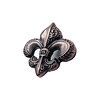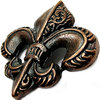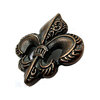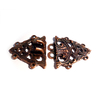CATEGORIES CONCHOS rivet-back ANTIQUE COPPER DRAGONEYE DG ZN AB
CATEGORIES CONCHOS rivet-back ANTIQUE COPPER FENRIR ZN AB
CATEGORIES CONCHOS rivet-back ANTIQUE COPPER FENRIS ZN AB
CATEGORIES CONCHOS rivet-back ANTIQUE COPPER FLEUR-DE-LYS L ZN AB
CATEGORIES CONCHOS rivet-back ANTIQUE COPPER FLEUR-DE-LYS M ZN AB
CATEGORIES CONCHOS rivet-back ANTIQUE COPPER FLEUR-DE-LYS-XL ZN AB
CATEGORIES CONCHOS rivet-back ANTIQUE COPPER FRANZÖSISCHE LILIE-14 ZN AB, 6 pcs Bulk
CATEGORIES CONCHOS rivet-back ANTIQUE COPPER FREYA-15 ZN AB, 6 pcs bulk
CATEGORIES CONCHOS rivet-back ANTIQUE COPPER FREYA-25 ZN AB
CATEGORIES CONCHOS rivet-back ANTIQUE COPPER GERMANENWAPPEN ZN AB
CATEGORIES CONCHOS rivet-back ANTIQUE COPPER GERMANISCHE SCHILDNIETE ZN AB
CATEGORIES CONCHOS rivet-back ANTIQUE COPPER GOTENKREUZ ZN AB
DRAGONEYE DG ZN AB
In stock
can be shipped within 1 days
Customers who bought this product also bought
|
|
|
|
|
|
|
|
Browse this category: ANTIQUE COPPER
FENRIR ZN AB
In stock
can be shipped within 1 days
Customers who bought this product also bought
|
|
|
|
|
|
|
|
Browse this category: ANTIQUE COPPER
FENRIS ZN AB
In stock
can be shipped within 1 days
Customers who bought this product also bought
|
|
|
|
|
|
|
|
Browse this category: ANTIQUE COPPER
FLEUR-DE-LYS L ZN AB
In stock
can be shipped within 1 days
Customers who bought this product also bought
|
|
|
|
|
|
|
|
Browse this category: ANTIQUE COPPER
FLEUR-DE-LYS M ZN AB
In stock
can be shipped within 1 days
Customers who bought this product also bought
|
|
|
|
|
|
|
|
Browse this category: ANTIQUE COPPER
FLEUR-DE-LYS-XL ZN AB
In stock
can be shipped within 1 days
Customers who bought this product also bought
|
|
|
|
|
|
|
|
Browse this category: ANTIQUE COPPER
FRANZÖSISCHE LILIE-14 ZN AB, 6 pcs Bulk
In stock
can be shipped within 1 days
Customers who bought this product also bought
|
|
|
|
|
|
|
|
Browse this category: ANTIQUE COPPER
FREYA-15 ZN AB, 6 pcs bulk
In stock
can be shipped within 1 days
Customers who bought this product also bought
|
|
|
|
|
|
|
|
Browse this category: ANTIQUE COPPER
FREYA-25 ZN AB
In stock
can be shipped within 1 days
Customers who bought this product also bought
|
|
|
|
|
|
|
|
Browse this category: ANTIQUE COPPER
GERMANENWAPPEN ZN AB
In stock
can be shipped within 1 days
Customers who bought this product also bought
|
|
|
|
|
|
|
|
Browse this category: ANTIQUE COPPER
GERMANISCHE SCHILDNIETE ZN AB
In stock
can be shipped within 1 days
Customers who bought this product also bought
|
|
|
|
|
|
|
|
Browse this category: ANTIQUE COPPER
GOTENKREUZ ZN AB
In stock
can be shipped within 1 days
Customers who bought this product also bought
|
|
|
|
|
|
|
|
Browse this category: ANTIQUE COPPER


























































































